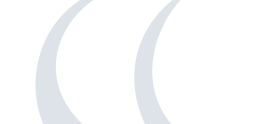View abstract
Cet abstract a été assigné à session BSCRS: Belgian Societies of Cataract and Refractive Surgery
| Titre | UV-crosslinking: principles and results - is there a place for surgical visual rehabilitation ? |
| But | To assess what objective and subjective visual results were obtained in keratoconus patients who underwent an UV-Cross linking (UV-CXL) for stabilisation of their conus in a first stage, followed by a surgical visual rehabilitation procedure because they became intolerant to contact lenses. |
| Méthodes | Retrospective study of 21 eyes of 22 patients who underwent UV-CXL for keratoconus stabilisation. In a second stage these patients underwent an extra procedure at one eye. Whether this procedure was a topography-guided PRK or the implantation of an Artisan toric or Artiflex phakic intra-ocular lens (PIOL) was decided based on parameters like spherical equivalent, corneal thickness, etc. Follow-up was done taking in account refraction, BCVA, UCVA, topography, keratometry. A subjective evaluation of the results was performed using a questionnaire. |
| Résultats | In 7 eyes a topography guided PRK was performed, in 15 eyes a PIOL was inserted. The average follow-up time was 4 months. In the PRK group the mean BCVA pre-op was 0.8 and post-op 0.7. The mean Spherical Equivalent pre-op was -1.70 and post-op -0.70. Topography shows a flattening of the cornea on the apex of the conus and a recentration of the conus. In the PIOL group the mean BCVA pre-op was 0.7 and post-op 0.8 . The mean Spherical Equivalent pre-op was -7.56 and post-op -0.60. The global satisfaction rate was 0.69 in the PRK group and 0.86 in the phakic implant group. |
| Conclusion | This preliminary study demostrates that satisfactory results can be obtained when performing a surgical visual rehabilitation procedure after UV-CXL in selected keratoconus patients. Higher satisfaction rates are obtained in those patients who underwent implantation of a phakic intra-ocular lens, mostly due to correction of their high ametropia. |
Auteur 1
| Nom | VRYGHEM |
| Initiales | J C |
| Ville | Brussels |
Auteur 2
| Nom | HENDRIKS |
| Initiales | W |

